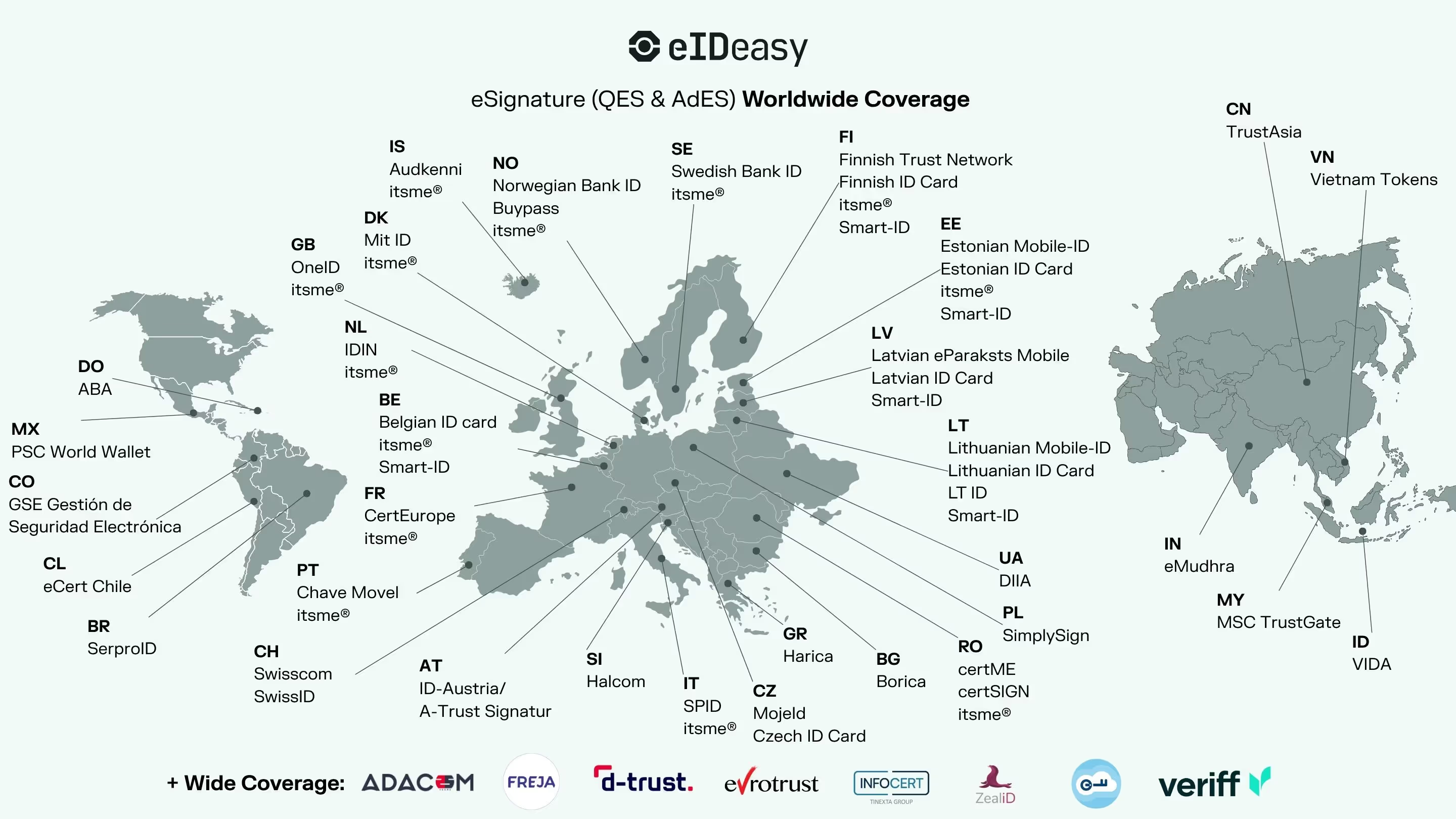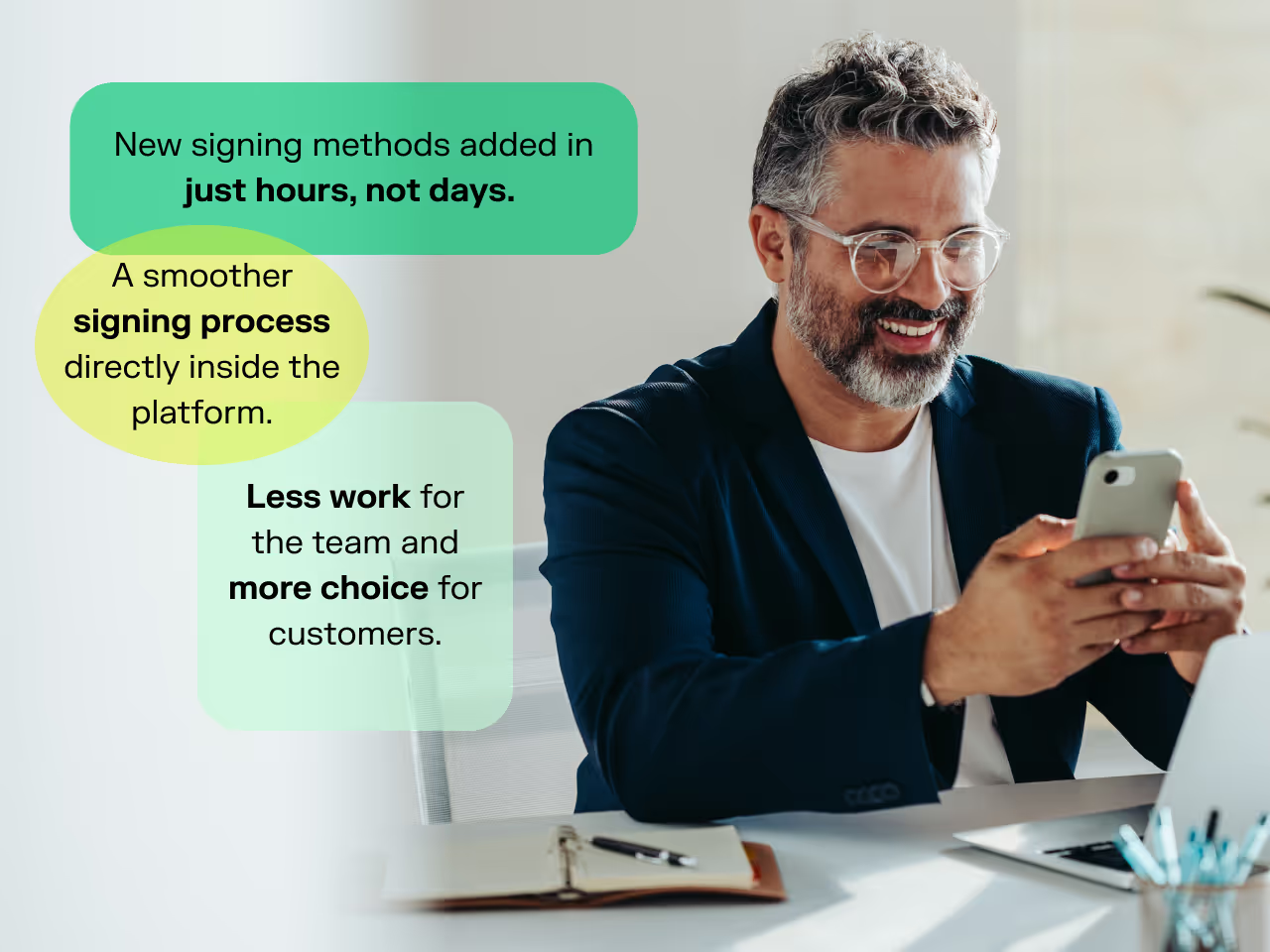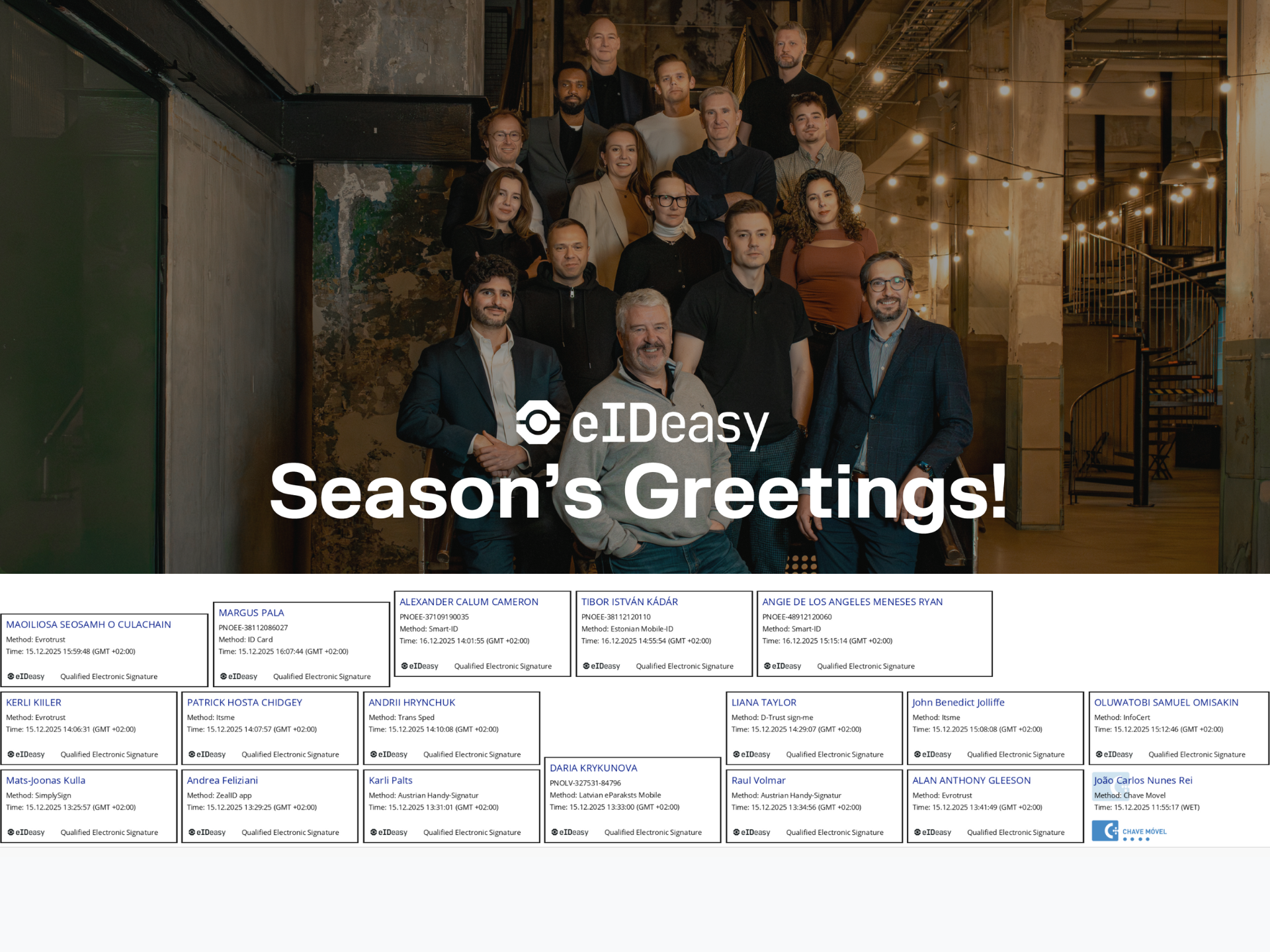Why Signatures Make or Break Document Management
In document management, a contract isn’t a contract until it’s signed.
No matter how well-built a platform is, if the signing process is clunky, limited, or non-compliant, the whole workflow breaks down.
The tricky part? Signatures aren’t the same everywhere.
Each country has its own identity systems, trust providers, and rules about what makes a signature legally binding. For a platform that wants to grow across borders, this patchwork of requirements can quickly turn into a nightmare.
The Current Challenges of Document Management & eSignatures
For document management and signing platforms, the list of challenges is long:
- Different rules in every market – eIDAS in Europe, ZertES in Switzerland, and countless local standards in between.
- Constantly changing regulations – what was compliant yesterday may not be enough tomorrow.
- Customer expectations – users want to sign with methods they already trust, whether that’s Smart-ID, itsme®, Evrotrust, or other national eIDs.
- Engineering drain – keeping up with integrations eats up resources that could be spent on building core product features.
Oneflow, a digital contracting platform based in Stockholm, ran into all of these issues head-on. Their story is a great example of how this challenge can be solved.
Case Study: Oneflow’s Experience
Oneflow helps organizations move away from static PDFs by offering dynamic, interactive contracts. These contracts can be edited in real time, negotiated online, and signed securely. With integrations into tools like HubSpot, Salesforce, and Google Workspace, they’ve built a reputation for making contract workflows smoother and smarter.
But there was a problem: their customers often needed to sign contracts across different countries and jurisdictions, each with its own rules and preferences.
For Oneflow, building and maintaining every possible signing method in-house just wasn’t realistic. It would drain time and resources from their real focus: creating better contracting experiences.
That’s when they turned to eID Easy...
The Solution
By integrating eID Easy’s single API, Oneflow found a way to handle signatures across regions without reinventing the wheel each time.
With eID Easy, Oneflow can:
- Add new signing methods in hours instead of days
- Offer a smoother, more intuitive signing process inside their platform
- Support Qualified Electronic Signatures (QES) for the highest level of compliance
- Rely on responsive technical support and consultancy when making integration decisions
The Results
- Speed: Implementation time for new signing methods dropped from days to just a few hours.
- User experience: The signing flow became more seamless, directly inside Oneflow.
- Efficiency: Less engineering time spent chasing signature requirements, more focus on improving the product.
As Amin Solhizadeh, Software Developer at Oneflow, put it:
“eID Easy makes it effortless for us to support multiple signing methods, while their responsive and knowledgeable team ensures we deliver secure and reliable signing experiences to our customers.”
The eID Easy Solution for Document Management Platforms
Oneflow isn’t alone. Document management providers everywhere face the same set of challenges: scaling across markets, staying compliant, and keeping customers happy.
Here’s how eID Easy makes that easier:
- One integration, global coverage
Instead of juggling dozens of local trust providers and identity systems, you connect once to eID Easy. Behind the scenes, we handle 80+ eID methods, Qualified Trust Service Providers (QTSPs), and Certificate Authorities. - Legally valid signatures, no guesswork
Support for QES and compliance with standards like eIDAS and ZertES means you can be confident your customers’ signatures will hold up. - Identity-first signing
Users can sign with verified national eIDs, making signatures both secure and trusted. - Cross-border readiness
Expand in the EU, UK, Switzerland, LatAm, and beyond without hitting legal or technical roadblocks. - Developer-friendly approach
A single, consistent API saves time and keeps your team focused on building what makes your platform special.

How It Works
The process is simple for both you and your users:
1. A user uploads or initiates a document in your platform.
2. Your system calls eID Easy’s API to request authentication or a signature.
3. eID Easy routes the request to the right eID or QTSP.
4. The user signs, and the document comes back legally valid.
No legal headaches. No complex integrations to maintain. Just a smooth, compliant signing process.
Why Document Management Teams Choose eID Easy
- Compliant signatures: QES support for regulated workflows.
- Identity-backed assurance: Tie signatures to real eIDs.
- Cross-border ready: Expand without worrying about local differences.
- One API, many methods: Forget managing trust providers yourself.
- Proven partnerships: Trusted by platforms like Oneflow and Verified.
Frequently Asked Questions
What is a Qualified Electronic Signature (QES)?
A QES is the highest standard of eSignature under EU law. It’s backed by verified identity checks and legally equivalent to a handwritten signature.
How does eID Easy ensure compliance across countries?
We connect your platform to national eIDs and QTSPs, handling the local compliance requirements for you.
Which signing methods do you support?
Over 80 and counting — from Smart-ID and itsme® to Evrotrust, InfoCert, BankID, and many more.
How complex is integration?
Not complex at all. One API call covers multiple methods, so you don’t have to rebuild integrations each time a customer needs something new.
Do I need to replace my trust provider?
No. eID Easy works with existing QTSPs and CAs, so you can add us alongside what you already have.
How is pricing structured?
Pricing depends on geography, use case, and transaction volume. We offer custom bundles to match local regulations and needs.
Pricing & Getting Started
eID Easy connects your business to 80+ identity methods, QTSPs, and CAs worldwide through one secure API. Pricing is flexible and tailored to your compliance requirements and usage.
→ Test it now — try the real eID and signature flow with no setup required.



